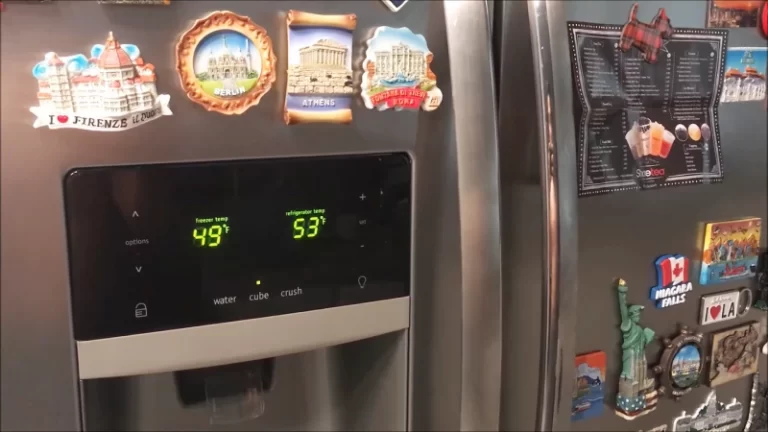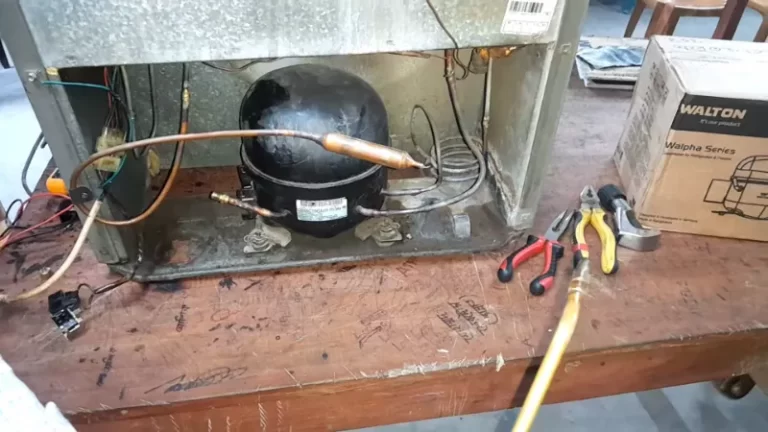Carrier Greenspeed Problems? Your Ultimate Guide to Fixing Them
You invested in a Carrier Greenspeed system for its promise of top-tier efficiency, whisper-quiet operation, and unparalleled home comfort. It’s a sophisticated piece of technology. But when it falters, the complexity that makes it so efficient can also make troubleshooting a daunting task. Don’t worry, you’re not alone.
Even the most advanced HVAC systems can experience issues. Understanding the common problems that affect Carrier Greenspeed units is the first step toward a fast and effective solution. This guide will walk you through the most frequent pain points, from confusing error codes to performance issues, and empower you with actionable solutions.
You'll Learn About
Unmasking the Most Common Carrier Greenspeed Problems
While incredibly reliable, certain issues appear more frequently than others with these variable-speed systems. They often revolve around the sensitive electronics and communication networks that manage their operation. Knowing what to look for can save you time, money, and discomfort.
The Dreaded “Communication Error”: Why Your Units Won’t Talk
One of the most common frustrations is a communication fault. This means the indoor air handler, the outdoor heat pump, and the Infinity thermostat can no longer “talk” to each other. When this happens, your system may shut down entirely or operate erratically.
The cause is often related to the sensitive four-wire “ABCD” communication bus. Installer error is a primary, yet often overlooked, cause of communication failures. Improper wiring, poor connections, or inadequate shielding can make the system vulnerable to electrical interference. Power surges and nearby lightning strikes can also disrupt or damage the sensitive control boards responsible for this communication.
Sensor Failures: When Your System Gets Confused
Your Greenspeed system relies on a network of sensors (thermistors and pressure transducers) to understand indoor and outdoor conditions. These sensors measure temperature and refrigerant pressure, feeding constant data to the main control board. If a sensor fails, the system receives bad information.
Symptoms of a sensor failure include the system running constantly without reaching your desired temperature or short-cycling on and off. A sensor located in a poorly insulated area can also send false readings. For instance, knowing how hot is an attic on a 80 degree day helps understand how extreme temperatures can affect sensors on nearby equipment or ductwork, leading to inaccurate system performance.
Performance Gaps: Not Cooling or Heating as Expected
Is your unit running constantly but the house just isn’t comfortable? This performance gap is a significant issue, especially when you see a spike in your utility bills. You might even be shocked by a $400 power bill despite owning a high-efficiency system.
The culprit could be a low refrigerant charge due to a leak, dirty coils restricting airflow, or even improper system sizing from the start. A more subtle issue is a phenomenon known as “inverter droop.” This is where the variable-speed compressor fails to ramp up to its full capacity because the system’s logic is hampered by a combination of minor issues, like a slight refrigerant undercharge and a mildly dirty filter, preventing it from delivering the power you need.
Control Board and Inverter Failures
The control board and inverter are the brains and muscle of your Greenspeed unit. The main control board processes all the data, while the inverter board modulates the speed of the compressor and fans. A failure in either can bring your entire system to a halt.
Power surges are the number one enemy of these sophisticated electronics. Overheating due to debris blocking airflow around the outdoor unit can also stress these components. Often, a single failing capacitor on the inverter board can create a cascading failure, destroying other components and requiring a full, costly board replacement.

Your Step-by-Step Troubleshooting Guide
Before you pick up the phone to call a technician, there are several simple checks you can perform safely. These basic steps can sometimes resolve the issue without the need for a professional service call.
Start with the Basics: What You Can Do Safely
First, check your Infinity thermostat. Ensure it’s set to the correct mode (heat, cool, auto) and that the temperature setting is where you want it. A simple mistake here is more common than you might think.
Next, perform a power cycle. Go to your home’s electrical panel and turn off the breaker for both your indoor and outdoor HVAC units. Wait a full minute before turning them back on. This can reset the system’s electronics and clear temporary glitches. Finally, always check your air filter. A dirty, clogged filter is the leading cause of poor performance, reduced efficiency, and unnecessary strain on your system.
| Symptom | Possible Cause | Homeowner Action | When to Call a Pro |
|---|---|---|---|
| System is completely unresponsive | No power; tripped breaker; control board failure | Check thermostat batteries. Check and reset circuit breakers. | If breakers trip repeatedly or system remains off. |
| Poor cooling/heating performance | Dirty air filter; low refrigerant; dirty coils | Replace air filter. Gently rinse outdoor unit coils with a hose. | If performance doesn’t improve after basic steps. |
| Error code on thermostat | Communication fault; sensor failure; component issue | Power cycle the entire system at the breaker. Note the specific code. | Immediately, providing the technician with the error code. |
| Strange noises (whining, grinding) | Fan obstruction; failing motor; compressor issue | Turn off the system. Check outdoor unit for visible debris like sticks or leaves. | If noises are loud, metallic, or persist after clearing debris. |
Advanced Solutions: When to Call in the Experts
While basic troubleshooting can solve some problems, the complexity of a Carrier Greenspeed system means many issues require professional diagnosis and repair. These systems are not standard HVAC units and demand specialized knowledge.
Diagnosing Communication and Sensor Faults
Resolving communication errors or pinpointing a faulty sensor requires specialized diagnostic tools. A qualified technician will use a multimeter to test the voltage and continuity of the ABCD communication wiring between the components. They can also test the electrical resistance of each sensor to determine if it is performing within Carrier’s specified range.
Attempting to diagnose these electrical issues without proper training can lead to further damage to the control boards. It is crucial to hire a technician certified to work on Carrier Infinity systems. An inexperienced technician can easily misdiagnose the problem, leading to unnecessary and expensive parts replacements.
Addressing Refrigerant Leaks and Charging
Unlike older, single-stage systems, a Greenspeed heat pump requires a critically precise refrigerant charge to operate efficiently. If you suspect a leak, a technician will use tools like an electronic leak detector or perform a nitrogen pressure test to find the source.
Simply “topping off” the refrigerant is not the correct procedure for these units. The proper method involves recovering the entire existing charge, repairing the leak, pulling a deep vacuum to remove moisture, and weighing in the exact factory-specified amount of new refrigerant. Anything less than this precise process will compromise both performance and longevity.
Proactive Measures: Preventing Future Greenspeed Problems
The best way to deal with problems is to prevent them from happening in the first place. A few key strategies can significantly reduce the likelihood of costly breakdowns and ensure your system runs smoothly for years to come.
The Critical Role of Proper Installation
A staggering majority of long-term HVAC problems can be traced back to the initial installation. With a system as advanced as the Carrier Greenspeed, the quality of the installation is paramount. This includes performing a proper load calculation to ensure the unit is sized correctly for your home, meticulous wiring of the communication bus, and expert brazing of refrigerant lines.
Attention to detail matters immensely. For instance, ensuring that the penetrations where pipes and wires enter your home are properly sealed is vital. Using the right materials, which might involve a backer rod alternative for larger gaps, prevents air leaks and protects the system’s efficiency.
Don’t Skip Professional Maintenance
Regular, professional maintenance is not an optional expense; it’s an investment in the health of your HVAC system. A proper tune-up for a Greenspeed unit goes beyond a simple filter change. A certified technician will clean the indoor and outdoor coils, check sensor accuracy, test capacitors, verify the precise refrigerant charge, and check for any available firmware updates for the control boards.
This annual check-up allows a professional to spot developing issues, like a weakening capacitor or a minor refrigerant leak, before they escalate into major system failures. This proactive approach ensures peak efficiency and can dramatically extend the life of your equipment.
Power Protection is Non-Negotiable
The sophisticated electronic circuit boards in your Greenspeed system are highly susceptible to damage from electrical surges and voltage fluctuations. A whole-home surge protector is one of the most important investments you can make to protect your HVAC system. Installed at your main electrical panel, it provides a crucial layer of defense against grid instability and nearby lightning strikes, safeguarding the expensive “brains” of your unit.
Is the Carrier Greenspeed Worth It?
Despite the potential for complex problems, the Carrier Greenspeed Intelligence system remains one of the most efficient and comfortable residential HVAC systems on the market. When it is installed correctly and maintained properly, it delivers on its promise of superior performance and energy savings.
By understanding the common issues and knowing how to perform basic troubleshooting, you become a more informed and empowered homeowner. For anything beyond the basics, the key takeaway is clear: always rely on a reputable, factory-certified Carrier dealer. Their specialized training is the best insurance for protecting your high-tech investment and ensuring years of reliable home comfort.



